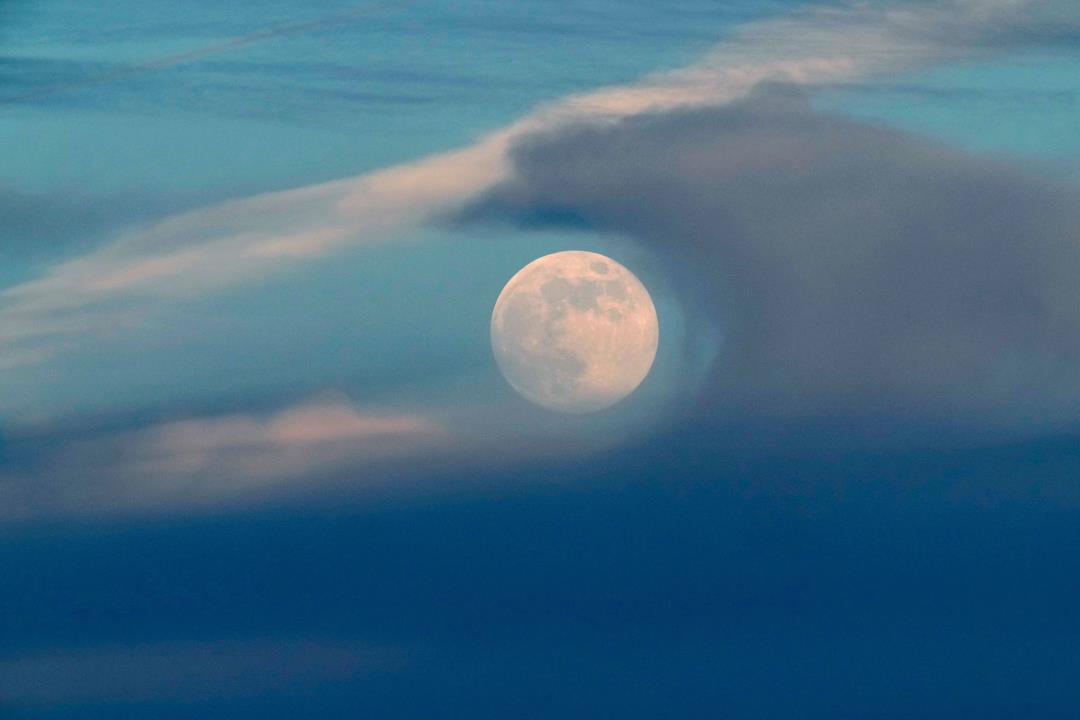

Saturday's Full Moon Will Be Opposite of a Supermoon - Newser
By Alex Johnson
As skygazers prepare for Saturday's full moon, they may be in for a surprise. Instead of the dazzling spectacle of a supermoon, this month's full moon will be the opposite - a micromoon. This lunar event occurs when the moon is at its farthest point from Earth in its elliptical orbit, making it appear smaller and dimmer than usual. While not as visually striking as a supermoon, the micromoon offers a unique celestial phenomenon for astronomy enthusiasts to observe.
What is a Micromoon?A micromoon is the opposite of a supermoon, appearing smaller and dimmer in the sky compared to a regular full moon. This phenomenon occurs when the moon is at its furthest point from Earth in its elliptical orbit, known as the apogee. As a result, the moon's apparent size is reduced, making it appear smaller and less bright than usual.
Despite its smaller appearance, a micromoon can still be a beautiful sight to behold in the night sky. Observers may notice subtle differences in the moon's brightness and size, especially when comparing it to a supermoon or a regular full moon.
While supermoons tend to garner more attention due to their larger and brighter appearance, micromoons offer a unique and intriguing celestial event for skywatchers and astronomers alike. The contrast between these two phenomena highlights the dynamic nature of Earth's closest celestial neighbor.
Impact on TidesWhile supermoons are known to cause higher tides due to their closer proximity to Earth, micromoons have the opposite effect. The smaller, dimmer moon will result in lower tides, which may have implications for coastal communities and marine life.
Scientists and environmentalists will be monitoring the tides closely to understand the full extent of the impact of this rare lunar event. It presents a unique opportunity to study the relationship between the moon's size and the Earth's oceans.
Furthermore, the contrast between supermoons and micromoons can provide valuable insights into the dynamics of our planet's tides and how they are influenced by celestial events.
The Impact on TidesAccording to Dr. Smith, the micromoon may also have an effect on tides, but it will be less noticeable compared to a supermoon. "Tides are primarily influenced by the gravitational pull of the moon, so a smaller moon like the micromoon will still have some impact, just not as pronounced," Dr. Smith explained.
Final ThoughtsIn conclusion, Saturday's micromoon will provide a unique celestial experience for stargazers around the world. Although smaller and dimmer than a typical full moon, the opposite of a supermoon still offers a chance to appreciate the beauty and wonder of our universe. Whether you plan to observe the micromoon from your backyard or simply take a moment to appreciate its presence, this astronomical event serves as a reminder of the vastness and complexity of the cosmos.
As we continue to marvel at the mysteries of the night sky, let us embrace each lunar phase, whether supermoon or micromoon, as an opportunity to connect with the natural world and contemplate our place within it. The celestial dance of the moon serves as a timeless reminder of the cycles of life and the ever-changing nature of existence.
Source: https://www.newser.com/story/366903/micromoon-to-appear-smaller-dimmer-saturday-night.html
Politics & Global Affairs
With over a decade of experience covering government, policies, and international relations, Alex dives deep into political dynamics and geopolitical shifts. His work is dedicated to cutting through partisan noise and delivering objective, fact-driven political insights.